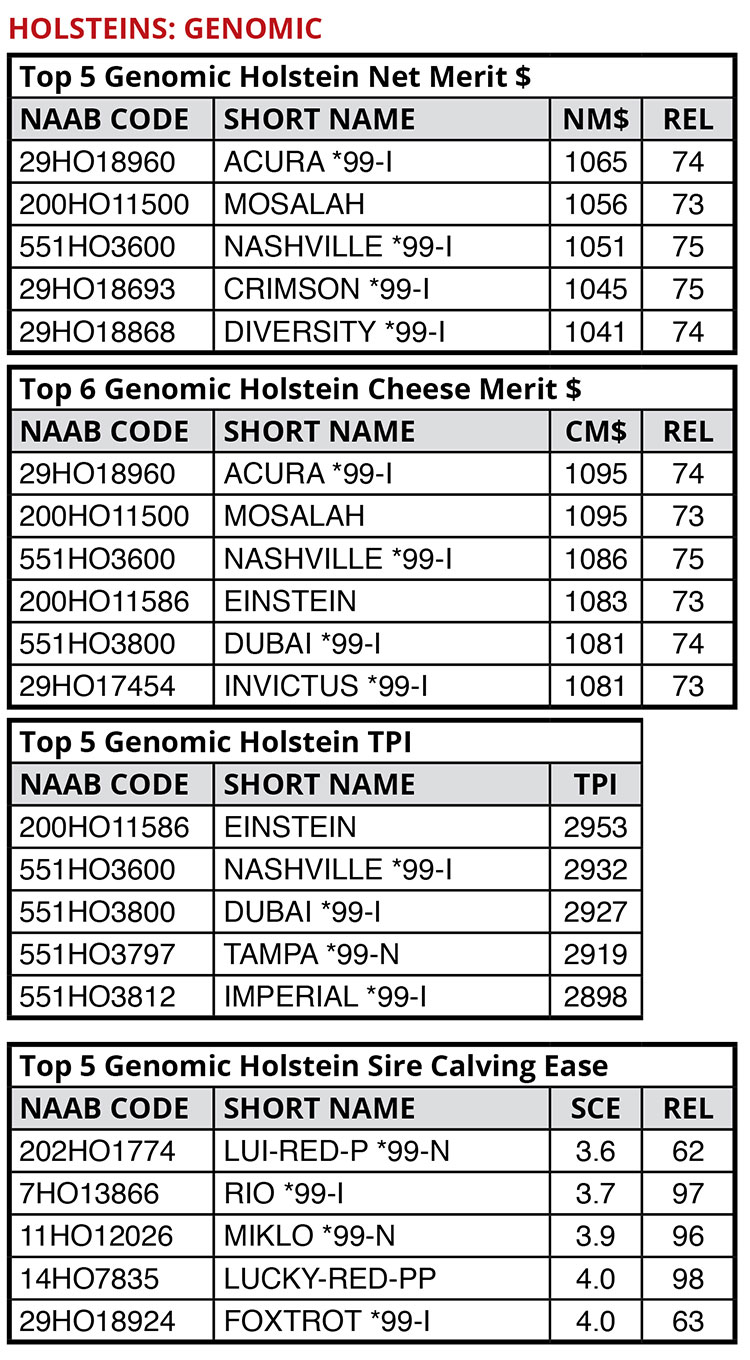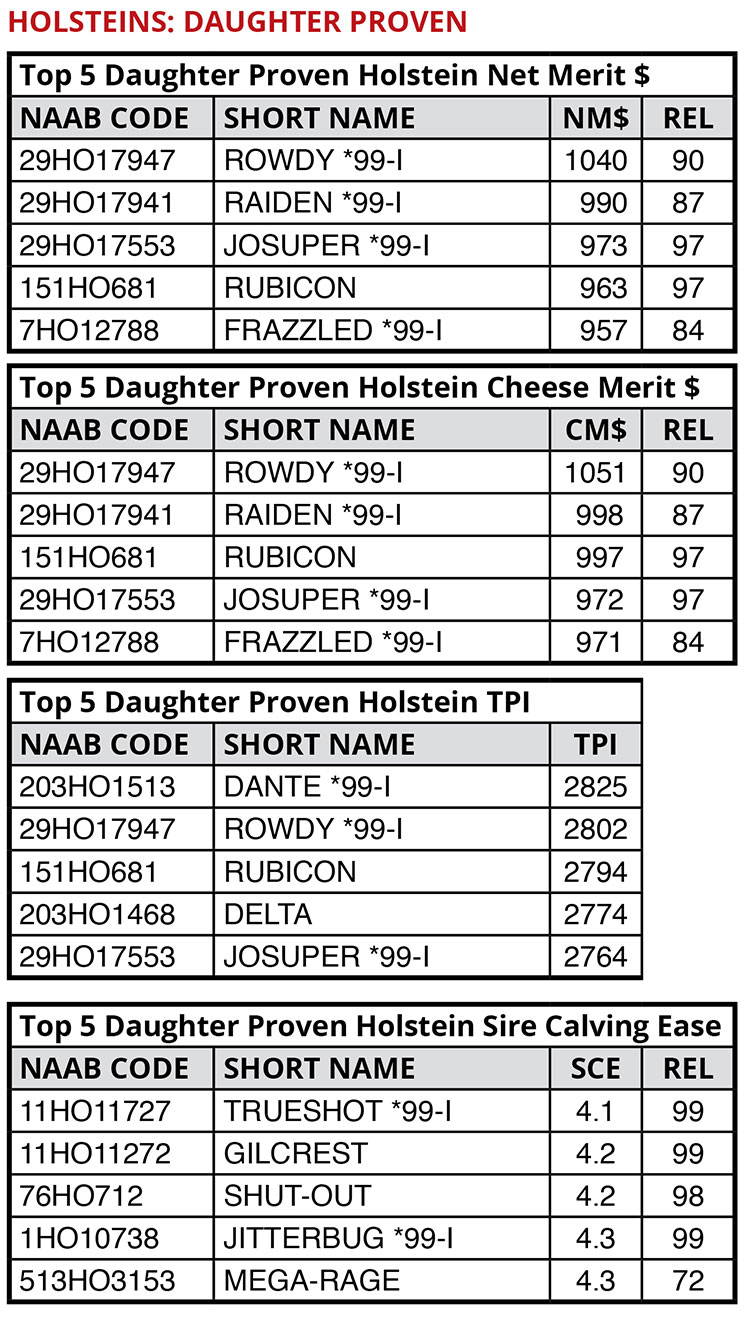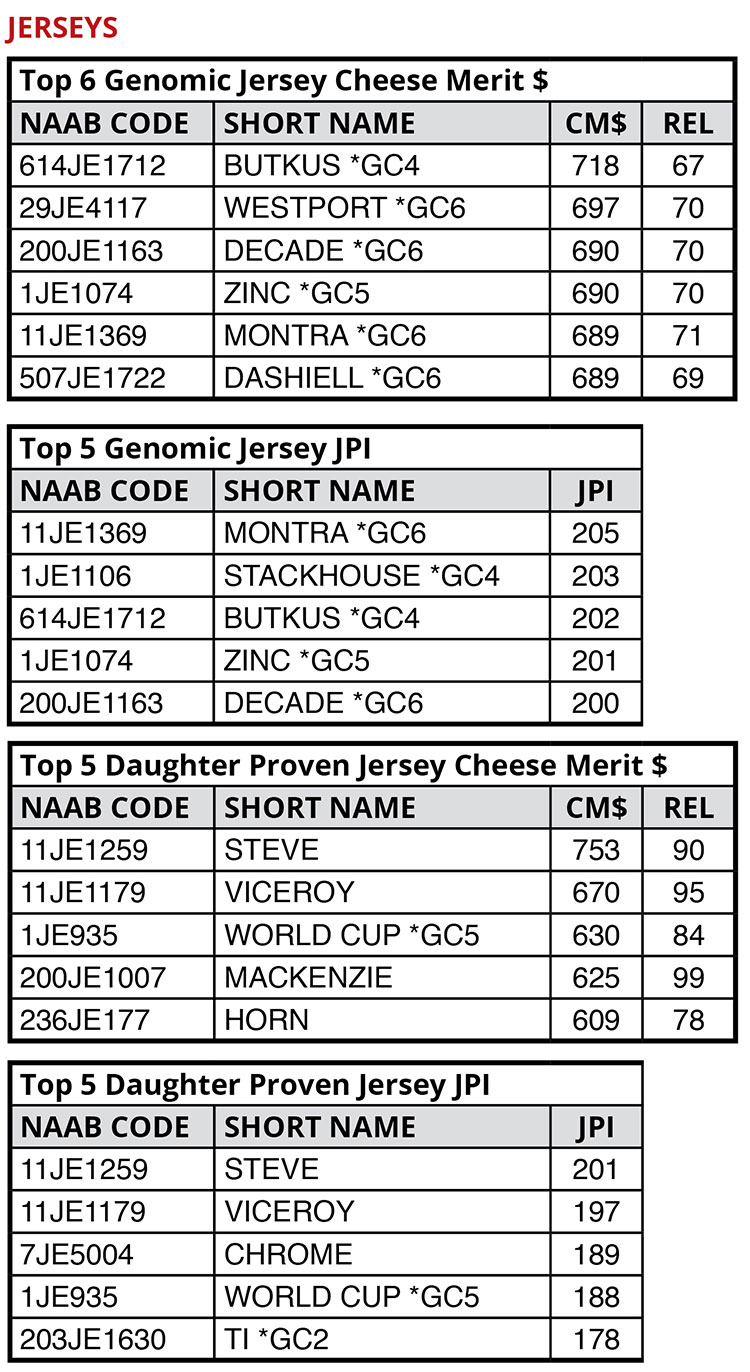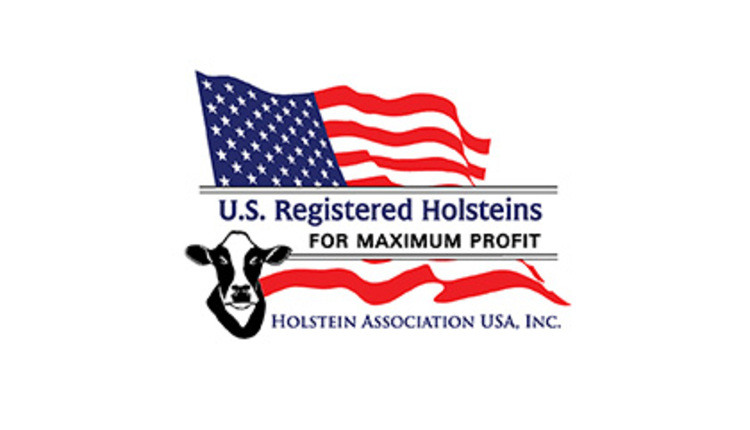These shifting reproductive strategies impact genetic measures such as Daughter Pregnancy Rate (DPR) and Cow Conception Rates (CCR). The impact has been so great that scientists at USDA’s Animal Genetics Improvement Laboratory (AGIL) and Council on Dairy Cattle Breeding (CDCB) have made adjustments to these key reproductive measures.
Young bulls fall slightly
Typically, genetic progress keeps ascending skyward. However, in reviewing the April 2019 genetic evaluations, young Holstein bulls actually dropped when looking back at the previous December’s results.
- Net Merit: the top genomic bull fell from $1,075 to $1,065 NM$
- Cheese Merit: the top genomic bull fell from $1,105 to $1,095 NM$
Those small changes in Net Merit $ (NM$) were caused by larger shifts in two traits — DPR and CCR. Because of rapidly evolving reproductive strategies and accelerating genetic progress, young bulls were impacted the most. Bulls born between 2016 to 2018 dropped by an average of 1.0 DPR. Elite young bulls on top of the Net Merit rankings dropped over 2.0 DPR points.
Both DPR and CCR are included in the NM$ formula with DPR receiving a weight of 6.7 percent, while CCR impacts 1.6 percent of the formula. Each unit change in DPR causes an $11 shift. That means an elite young Holstein bull lost $22 for Net Merit based on a 2.0 shift in DPR in the April genetic evaluation. The impact is less for CCR as a 1.0 shift only relates to a $2.20 adjustment in Net Merit values.
Jerseys impacted, too
Changes for Jerseys followed a similar trend as Holsteins, but to a lesser degree. While all Holstein bulls born in 2018 dropped by an average of 1.1 DPR points, Jerseys showed a minimal 0.3 percent drop across all age categories.
Production traits were also impacted. Jersey bulls with a Breed Based Representation (BBR) between 90 and 93 had a 4-pound reduction in both Predicted Transmitting Abilities (PTA) for Fat and Protein. The production trait updates based on BBR that quantify breed purity also discount genetic merit from other breeds. This gives a more accurate depiction of Jersey genetics.
Big boom for beef bulls
There’s been a lot of talk in the countryside about dairy farmers who are using more beef bulls on their dairy cows.
Is that talk true?
Semen sales data from the National Association of Animal Breeders (NAAB) would say YES!
Domestic sales of beef semen skyrocketed by 1.5 million units from 2017 to 2018. That’s a 59 percent jump in beef semen sales from 2017’s 2.5 million to 2018’s 4 million units.
At the same time, domestic sales of dairy semen dropped by 5.7 percent. Overall, 23.2 million units were sold in 2017, compared to 21.9 million units in 2018.
New look to bull list
The revamped Hoard’s Dairyman Bull List reflects sire selection’s ongoing evolution. With the wheels of genetic progress spinning faster than ever, the entire bull list matches that pace, going to the printing press less than 24 hours after information arrives in our office. Likewise, electronic distribution occurs before the presses are even done rolling.
This April, 4,284 bulls were declared active by A.I. organizations . . . but only 1,074 of those bulls had milking daughters. When everything is considered, bulls with genomic-only predictions climbed to a 75 percent market share. That’s a new watermark and one that surely will be eclipsed again.
Holsteins, Jerseys, and Red and White Holsteins account for over 98 percent of all U.S. semen sales, according to NAAB data. That’s why those breeds garner the greatest space in the bull list.
Rankings not only include Net Merit and Cheese Merit, but Holsteins are ranked by Total Performance Index (TPI), Sire Calving Ease, Daughter Pregnancy Rate, Udder, and Feet and Legs as well. Jerseys also have been listed by Jersey Performance Index (JPI). Anchored by our roots when we published the industry’s first A.I. ranking in 1968 based on a positive Predicted Difference for Milk, all bulls featured on the top 25 lists for udder and feet and legs must also be in the top 40th percentile for Net Merit to be listed.
In a world where information is available in an instant, this A.I. sire comparison remains one of the few objective ways to view all your sire options side-by-side from competing A.I. centers.
April 2019 Hoard's Dairyman Bull List
Top 50 Genomic Holstein Net Merit $, Cheese Merit $, and TPI
Top 50 Daughter Proven Holstein Net Merit $, Cheese Merit $, and TPI
Top 25 Holstein Genomic and Daughter Proven Udders, Feet and Legs, and DPR
Top 25 Holstein SCE and Jersey CM$ and JPI
Top Colored Breeds













